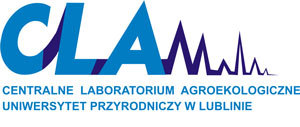|
Szczegóły, literatura
|
Davies M.G., Thomas A.J., 1973. Journal of the Science of Food and Agriculture 24, 1525-1540
Tytuł: An investigation of hydrolytic techniques for the amino acid analysis of foodstuffsAbstrakt: A survey of hydrolytic methods for the amino acid analysis of foods is presented and the advantages and disadvantages of the methods are discussed. Amino acids were determined after hydrolysis of the proteins with hydrochloric acid, sulphuric acid, perchloric acid, p-toluene sulphonic acid and sodium hydroxide. The results are shown graphically using as examples a pure protein (casein) and a potential food protein of microfungal origin (Fusarium graminearum). The addition of some cation exchange resin to acids catalysed the hydrolysis of some peptide bonds containing aspartic acid, threonine, serine, glutamic acid, valine and isoleucine. Whilst several methods gave close agreement for the analysis of a pure protein, hydrolysis with 6 N-hydrochloric acid gave the largest yield of most amino acids in food proteins. With the exception of extracted soya meal, protection of cystine prior to hydrolysis gave higher values than direct hydrolysis.
Schram E., Moore S., Bigwood E.J., 1954. Biochemical Journal 57, 33-37
Tytuł: Chromatographic determination of cystine as cysteic acid
|
